Hydrosphere – Movement of Oceanic Water
by Devender
0 1384
Hydrosphere – Movement of Oceanic Water
There are two types of movement that happens in oceanic water: Horizontal and vertical.
- The horizontal movement is known as Ocean waves & Ocean currents
- The Vertical movement is known as Tides
- Tides:
- The rotation of the earth causes centrifugal force which is another reason for the formation of tides
- Together the gravitational pull and centrifugal force are responsible for creating two tidal bulges on earth
- Spring Tides:
- Neap Tides:
- Ocean Waves:
- The water in waves doesn't move but only the wave train moves
- If you throw a cork in water, it will not travel to any place but only up and down
- Ocean currents:
- The currents that flow from the equator region polewards have high temperatures and are known as warm currents
- The currents that flow from the polar region equatorward are cold currents
- The prevailing winds are one of the major factors for currents to flow
- These winds blow in one direction and because of the force of friction, drag the surface water
- The temperature of the ocean water differ a lot at the equator and at the poles
- Circulation of the Atlantic Ocean:
- North Atlantic Ocean Current Movement:
- This Gulf stream touches the coast of America as far as Cape Hatteras
- After that, it gets deflected eastwards under the combined effect of westerlies & rotation of the earth; and reaches Europe as North Atlantic drift
- From the North Atlantic, it divides into three directions: eastward to Britain, northward to the Arctic, and southward along the Iberian coast as the cool Canaries current
- The canaries current flowing southward merges with the North equatorial current, completing the clockwise circuit in the North Atlantic ocean
- The Irminger current or East Greenland current flows between Iceland and Greenland and cools the North Atlantic drift at the point of convergence
- The cold Labrador current drifts south-eastwards between west Greenland and Baffin island to meet the warm Gulf stream off Newfoundland
- South Atlantic Ocean Current Movement:
- Cayenne current which flows along the Guiana coast
- Brazilian current which flows southwards along the coast of Brazil
- The current is diverted northward as the cold Benguela current reaching the west coast of Africa
- The Benguela current surges equatorward driven by the regular SE trade winds to join the South equatorial current
- This completes the circulation of currents in the South Atlantic
- Circulation of the Pacific Ocean:
- The cold Bering current or Alaskan current creeps southwards from the narrow Bering strait
- It is joined by Okhotsk current, to meet the warm Japan current as cold Oyashio current
- The cold water eventually sinks below the warm water of North Pacific drift & part of Oyashio moves eastward as the cold Californian current along the coast of western USA
- It finally coalesces with the North Equatorial current to complete the clockwise circulation
- The South equatorial current, driven by the SE trade winds, flows southward along the coast of Queensland as the East Australian current
- The current turns eastward towards New Zealand under the full effect of westerlies in the Tasman Sea & merges with the south pacific current
- Indian Ocean Circulation:
- In the north Indian Ocean, there is the complete reversion of direction of currents between summers and winters, due to change of monsoon winds
- In summers, under the effect of SW monsoon, it flows clockwise, & in winters under the effect of NE monsoon, it flows anti-clockwise
It is the periodic rise and fall in the level of water of the ocean that occurs due to the gravitational pull of the sun and moon. The sun is bigger than the moon, so it should exert more gravitational pull but it is also at a far distance. So, the gravitational pull from the sun isn't that influential. Hence, the moon produces a force of approximately 2.17 times stronger than the sun.
The tidal bulge on the side of the moon occurs due to the gravitational pull whereas the tidal bulge on the opposite side is because of the centrifugal force of rotation of the earth.
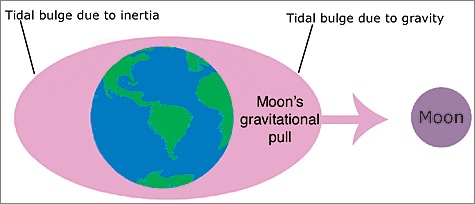
On the full moon and new moon, the sun and moon are almost in a line with the earth. They exert a combined pull on the earth and the tides are highest on these 2 days that are known as spring tides.

When the moon is in the first or last quarter, it makes a right angle with the sun where the earth is at the center. Therefore, the attraction of both balances each other, and low amplitude tides occurs that is known as Neap tides.
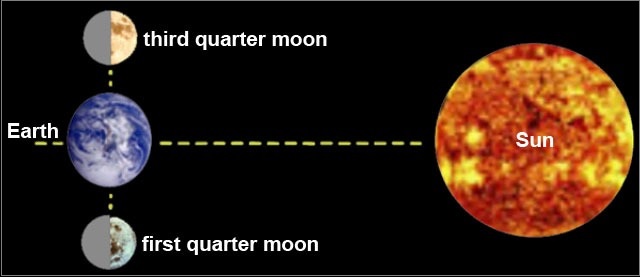
These are oscillatory movements in the water created by alternate rise & fall of the sea surface. These are mainly formed by friction & pressure of wind on the sea surface.
Ocean currents are large masses of surface water that circulate around the ocean regularly. Only the water of the current moves forward while the water on the sides and the water below remains almost at the same place.
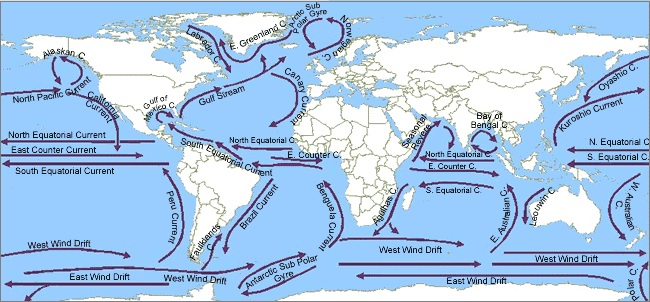
The warm equatorial water moves slowly along the surface polewards, while the heavier cold water of polar regions moves slowly along the bottom of the sea equatorward as the warm water is light so it rises while the cold water is heavy and dense.
The waters of low salinity flow on the surface of the water of high salinity, while the water of high salinity flow at the bottom towards the water of low salinity as the water of the high salinity is denser than the water of low salinity.
The steady trade winds constantly drift 2 streams of water from east to west as North equatorial current & South equatorial current. Between the west-flowing North & South Equatorial currents is the east-flowing Equatorial counter current
In the north Atlantic ocean, the Cayenne current is joined & reinforced by the north equatorial current. It heads towards the northwest as a large mass of equatorial water into the Caribbean Sea. A part of this current enters the Gulf of Mexico, after that it emerges from Florida straight between Florida and Cuba as Florida current. The rest of the equatorial water flows northwards, east of Antilles to join the Gulf Stream off the SE USA.
Within this ring of currents, an area in the middle of the Atlantic has no perceptible current, and a large amount of floating seaweed gathers in here, and this is known as the Sargasso Sea.
Apart from this clockwise circulation of currents, there are also cold currents that enter the North Atlantic from the Arctic regions. These are blown south by outflowing polar winds.
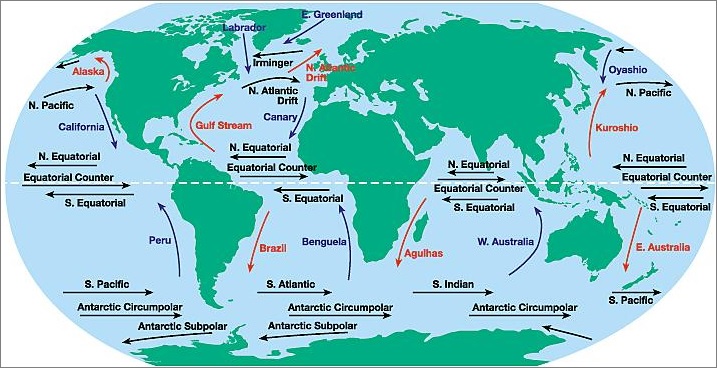
At the shoulder of NE Brazil, the protruding landmass splits the South equatorial current into two parts:
The South Atlantic Ocean follows the same pattern but still differs as the circuit is anti-clockwise here and the collection of seaweed in the mid-south Atlantic is not so distinctive.
The south equatorial current is split at Cape Sao Roque where one branch turns south as the warm Brazilian current at about 40 Degree S. Under the influence of westerlies & rotation of the earth, the current propels eastward to merge with the cold South Atlantic current.
It is the deepest, largest and covers 1/3rd of the Earth's area. It is triangular in shape. The NE trade winds blow the North equatorial current off the coast of the Philippines and Formosa into the East China Sea as the Kuroshio or Japan current. It moves poleward as North Pacific drift, keeping the ports of the Alaskan coast ice-free in winters.
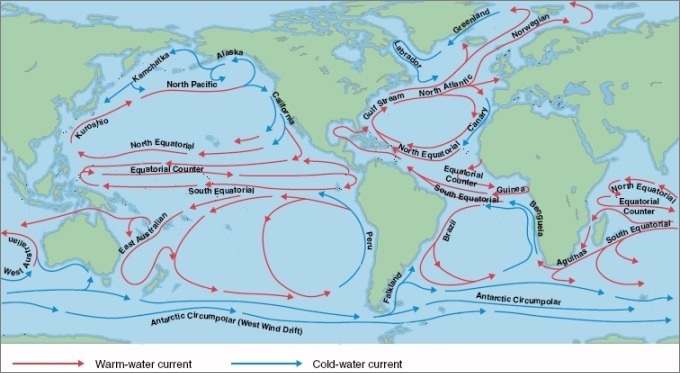
The current turns northward along the western coast of South America as the cold Humboldt Current or Peruvian current after being obstructed by the tip of southern Chile. The Peruvian current finally links up with the South Equatorial current and completes the cycle of currents in the South Pacific.
The equatorial current, turning southward past Madagascar as the Agulhas or Mozambique current merges with the South Pacific current. From there it turns equatorward as cold West Australian current.
The equator ocean water is 8 cm higher in level compared to mid-latitudes because the heating by solar rays causes the expansion of water.

Share:

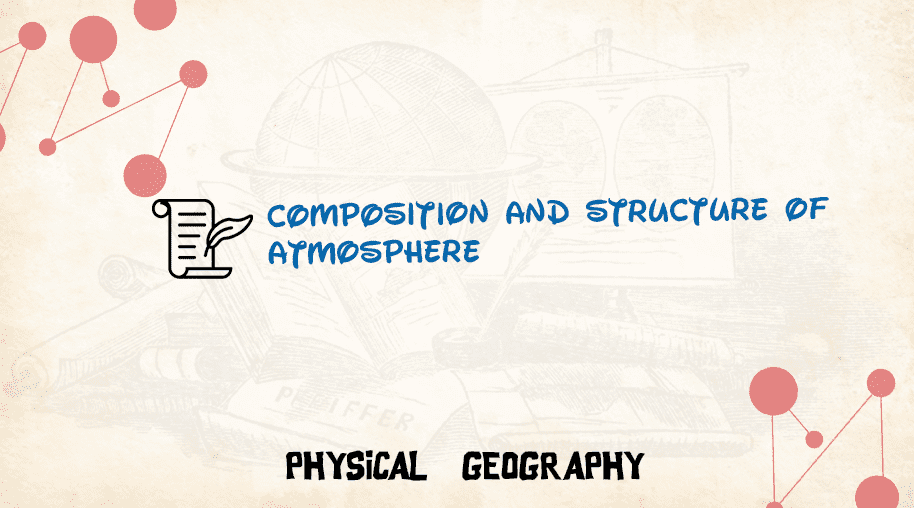
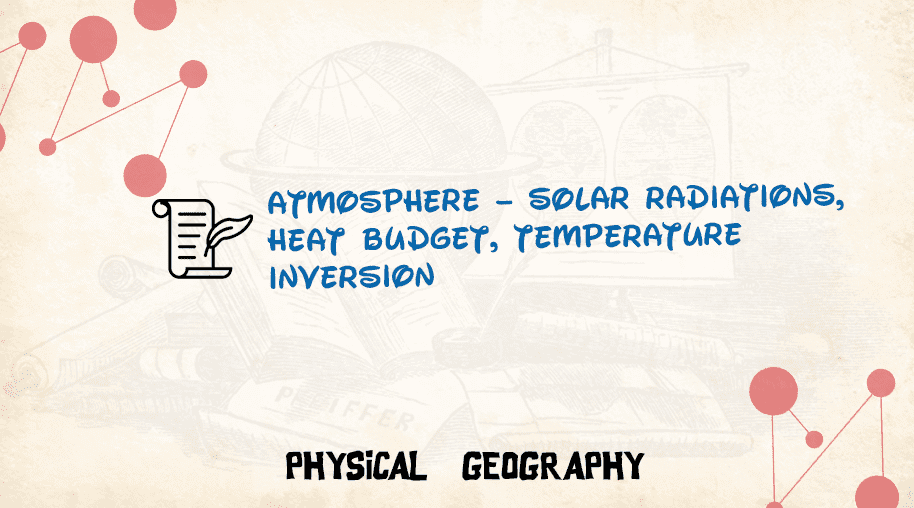
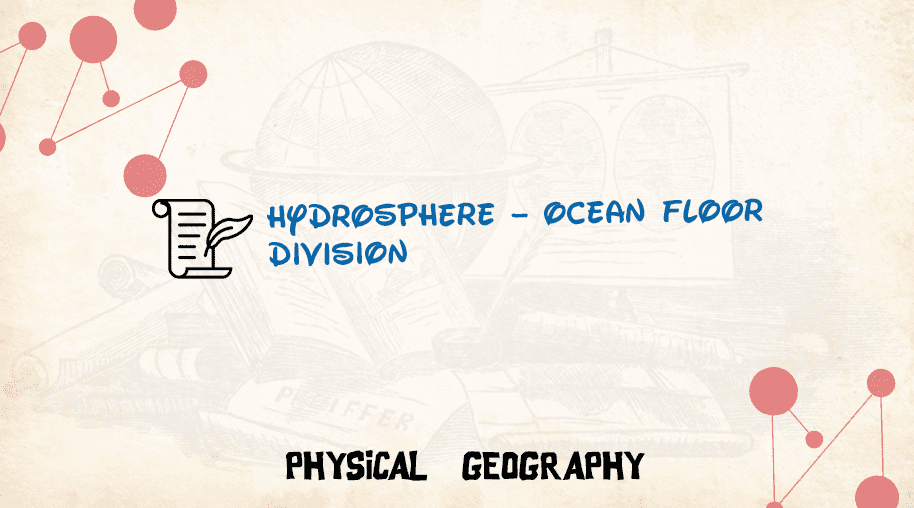
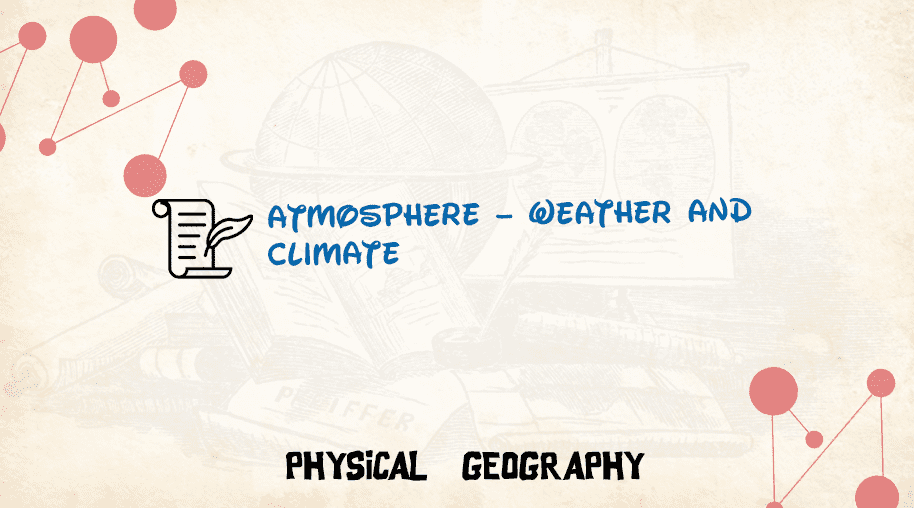


Comments
Waiting for your comments